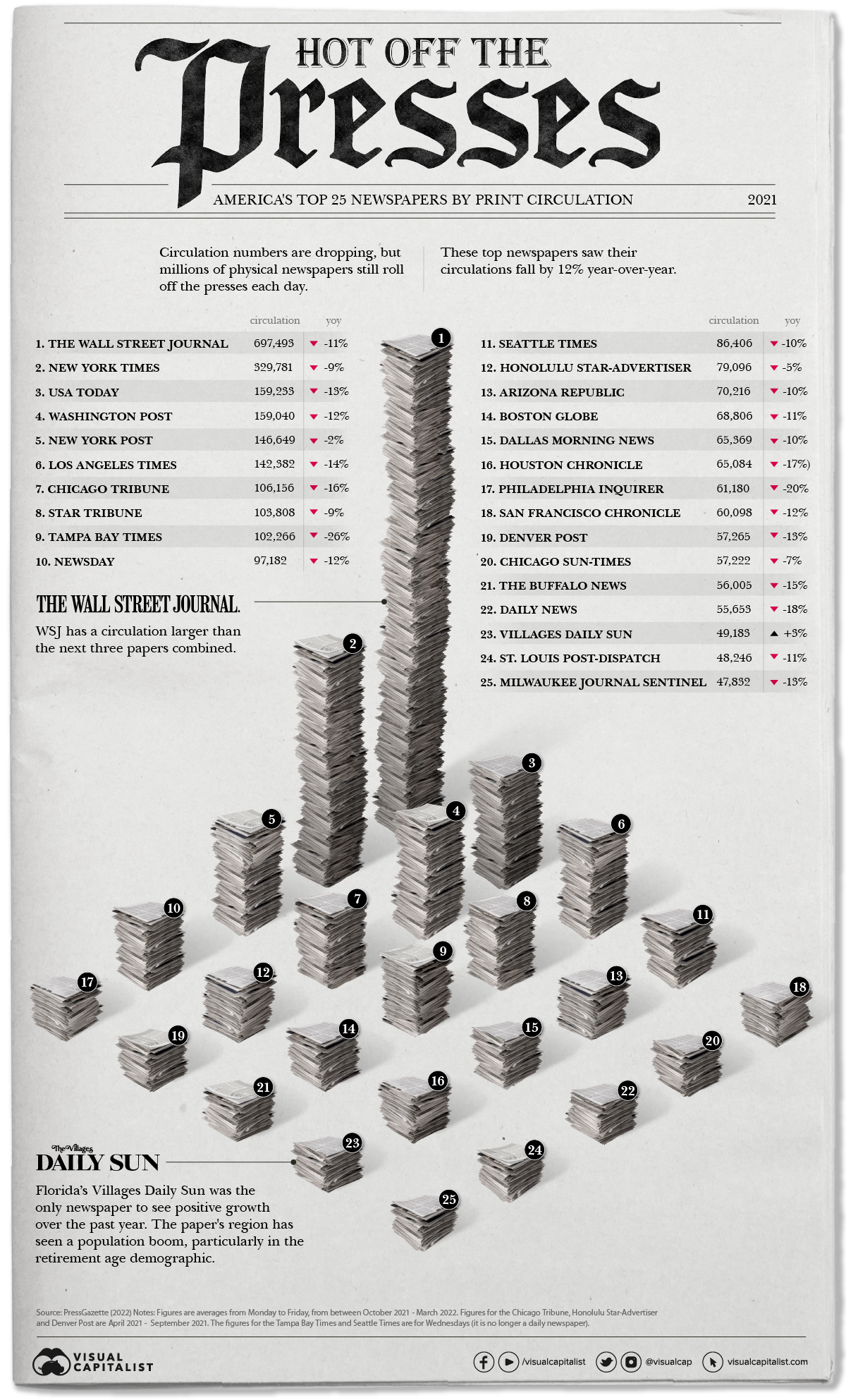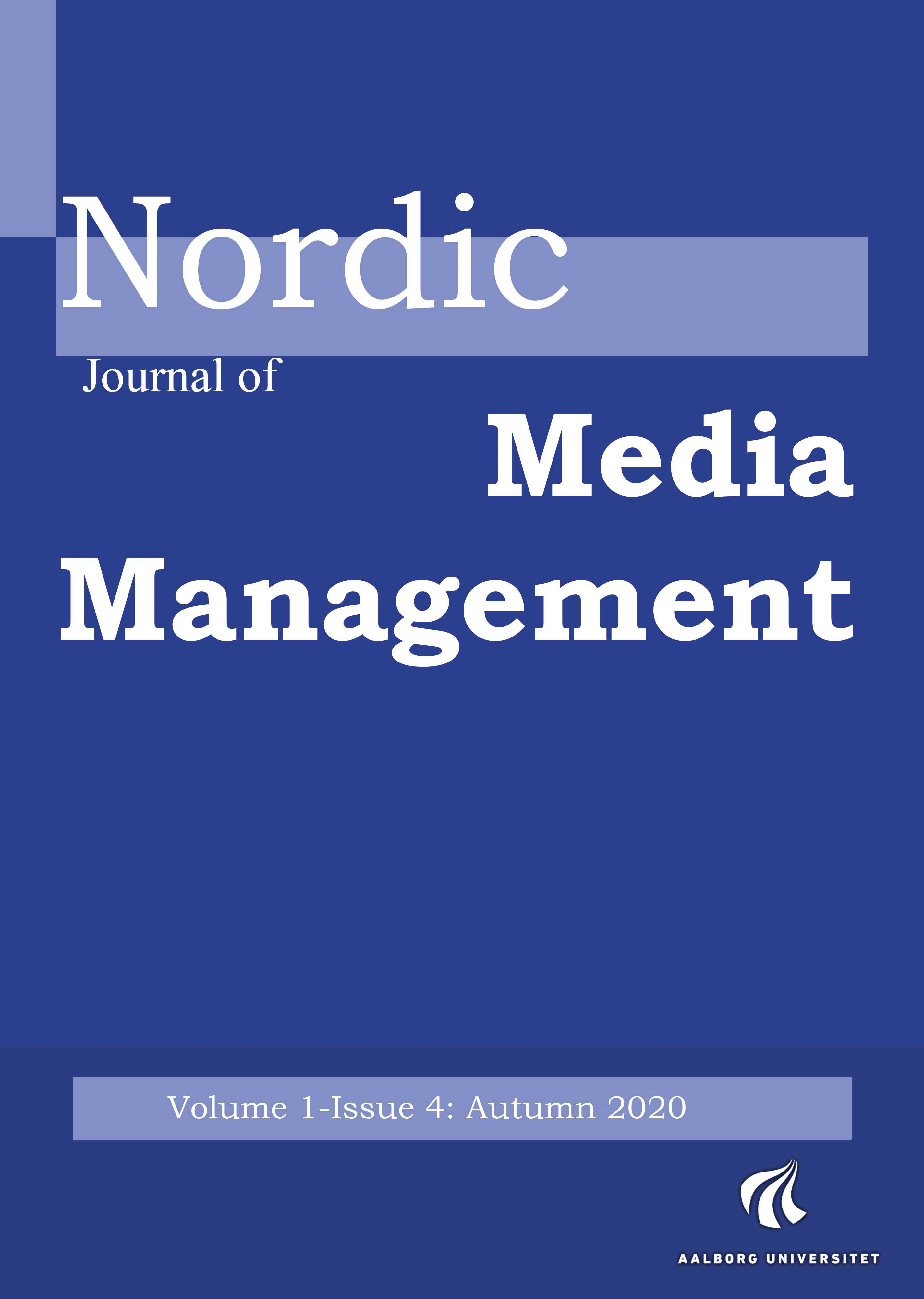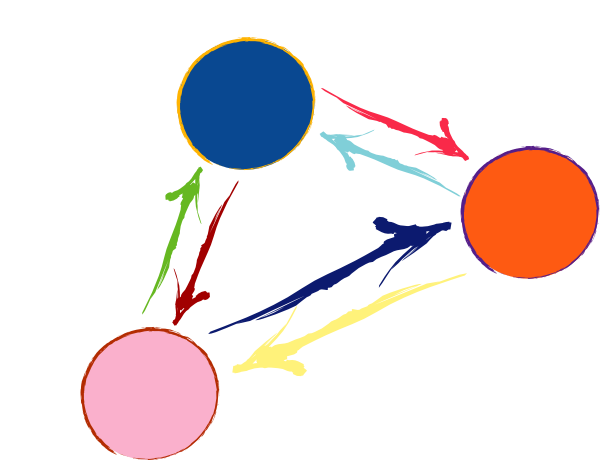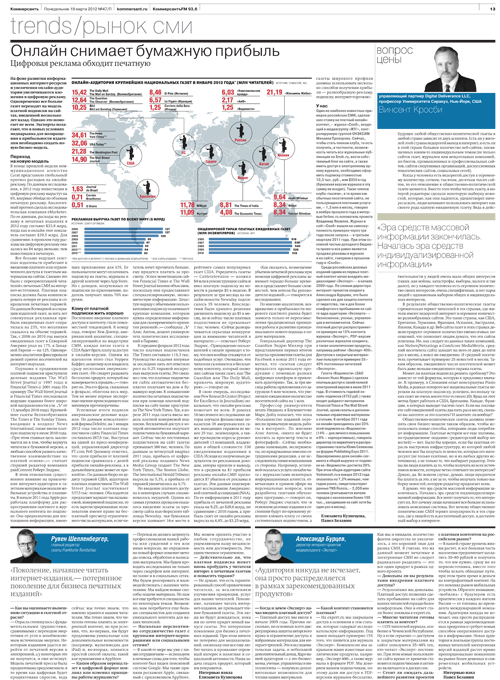2025 World Media Economics and Management Conference: Warsaw
The 2025 biennial World Media Economics and Media Conference will be held May 20-25 in Warsaw.
The 2025 biennial World Media Economics and Media Conference will be held May 20-25 in Warsaw.

A graphic illustration from VisualCapitalist.com shows the dire situation of U.S. daily newspapers.

Reality is that the world’s newspaper industry, indeed all of the Industrial Era’s legacy industries that are colloquially referred to as the Mass Media, have ultimately failed to adapt to the New Media environment, despite more than 25 years of endeavors, to…

“The definition of the thing establishes its essence.” – ‘Metaphysics’, Aristotle (384-322 BCE) Know what are talking about. Otherwise, you might become a producer of hype rather than success. Words have real meanings. The traditional media industries are so woefully misusing terminology…

This article published the peer-reviewed Nordic Journal of Media Management asserts that new, extremely popular modes of media services have arisen during the past 25 years that need to be critically categorized as different from the Mass Media we have known from…

The world’s media industries are more than a decade overdue to face, acknowledge, and act upon these nine bare facts about the epochal transformation of the media environment as the Industrial Era ends and the Information Era begins..

At the turn of the millennia, Digital Deliverance LLC began publishing a paid-subscription printed newsletter (the recession later killed it). In retrospect, we can state it used a media business model of the waning Industrial Era to provide advice about the…

In 1993, after two decades working for newspapers’ print editions and for two of the world’s major international news services, I switched the focus of my career to working full-time on journalism’s transition from print and terrestrial or cable and satellite broadcasting…

Previous webpage: The Prism and New Media Chromodynamics The ‘Greens’ — A New Gravity When people’s access and choices of news, entertainment, and other information switches from relative scarcity to surplus, each person naturally gravitates to whatever mix of items from the entire…

Previous webpage: The Spectrum of Change The ideal prism with which to refract and examine the entire spectrum of change underway in the media environment, now that people’s access and choices of news, entertainment, and other information has changed from relative scarcity…

Previous webpage: Maelstrom as the Flow Changes “I wasalmost a sorry witness of such doings, knowing that a little theory and calculation would have saved him ninety per cent of his labor.” — Nikolai Tesla about Thomas Edison’s exhaustive experimentations. Access and…

Previous webpage: Personalization, Customization, Individuation, and New Media. A spectacularly obvious but remarkably little noticed aspect of the epochal change underway in the media environment is a reversal of the locus where contents are consumed. By locus or loci, I don’t mean what…

Previous webpage: Social Media and Early Platforms for Individuation. Many media executives and media academicians inadvertently conflate the differences between the terms personalization, customization, and individuation. The terms differ in meaning. Here is a primer about correct usage: Personalization is a form of…

Previous webpage: The Malestrom as Flow Reverses Much like how marketers affixed unnecessary decimal points to the terms Web 1 and Web 2, they’ve begun to misuse the term Web 3. Some term Web 3 (or ‘Web 3.0’) to be anything they happen…

Previous webpage: The Rise of Search Engines Heralds Individuated Media Since the new millennium began, billions of people have discovered a more practical way to obtain a customized supply of news, entertainment, and other information than manually using search engines or revisiting numerous…

Previous webpage: The Significance of Web 1 (‘Web.1.0’) and Web 2 (‘Web 2.0’) Why did more than three billion people begin routinely using the Web when they were already being served news, entertainment, and other information by the publications and broadcasts of…

Previous webpage: When Moore’s, Cooper’s, and Butters’ Laws Interact on Media Here are some corollary effects resulting from observable dynamics of Moore’s, Cooper’s, and Butters’ laws. These go beyond the computer and telecommunications industries from which those dynamics directly stem and beyond the…

Previous webpage: Butters’ Law Acting on Media Alone, neither Moore’s Law nor Cooper’s Law nor Butter’s Law would have led to the world we know today and the one we will know in the future. During the past 50 years, Moore’s Law, without…

My reputation as a New Media consultant to the news industry, including my appointment since 2007 to teach postgraduate New Media Business at Syracuse’s Newhouse School, largely result from work I did long ago. For ten years beginning in 1993, I helped…
Today is Digital Deliverance Managing Partner Vin Crosbie‘s 59th birthday, which means the start of his 60th year (which he will complete a year from today). ‡ What happens when applied Social Media conflicts with existing laws? This month, the New York State…

Kommersant of Moscow interviews Vin Crosbie about the future of the world’s printed newspaper industry . (Google English translation)
For the past four years, I’ve been teaching a New Media Business for media course at Syracuse University’s S.I. Newhouse School of Public Communications. It was originally open just to postgraduate students, but a few years ago we opened it to select…
[34-minute PowerPoint video of keynote speech opening the fifth annual Personalize MEdia Conference (formerly Individuated Media conferences), Boulder, Colorado. June 20, 2011. How traditional media companies have gone astray by misperceiving consumers’ switch from analog to digital formats to be the greatest trend…

TV news coverage of the third annual Media Lecture, delivered by Prof. Vin Crosbie on July 14, 2010, at the Drama Center of the National Library of Singapore.
Why should newspapers offer online video news? Professor Crosbie explains why to journalists from the Bosnia and Herzegovina, Montenegro, Serbia, South Africa, Russia, and the Ukraine, during the Broadcast Design workshop organized by the Media Development Loan Fund. Recorded by Televizija Vijesti in Podgorica, Republic of Montenegro, on November 21, 2008.ast Design workshop organized by the Media Development Loan Fund. Recorded by Televizija Vijesti in Podgorica, Republic of Montenegro, on November 21, 2008.
Video clip of Vin Crosbie defining the term New Media and its potential.
Why Mass Media are ‘dumbing down’, becoming more timid.
Why the major reason for American daily newspapers’ demise is their inertia has violated the basics of the Principle of Supply & Demand.
I’m back! I’d taken a year off for reflection. After concluding that no daily newspaper executive in North America knows where their industry is headed, I went back to school approximately this time last year. I’d hoped that news media academics might…
American daily newspapers are dying for only two reasons that have nothing to do with advertiser flight or with lacks of sufficient multimedia, convergence, interactivity, Web 2.0, or ‘citizen journalism. Learn the two real reasons.
Today is my 5,000th day working full-time in new-media. Let me tell you what I’ve seen, and to restate why I’m in the news business.